
JAPANESE PRINTS
A MILLION QUESTIONS
TWO MILLION MYSTERIES
Ukiyo-e Prints浮世絵版画 |
|
Port Townsend, Washington |
|
TOYOHARA CHIKANOBU |
|
豊原周延 |
|
1838-1912 |
|
Series: Nijūshikō Mitate Awase |
|
二十四番見立画合 |
|
Print Subject: Gomō |
|
呉猛 |
|
Publisher: Possibly Hasegawa Tōjiro |
|
Date: 1891 |
|
Meiji 24 |
|
明治 24年 |
|
Size: 14" x 9 1/4" |
|
Unsigned |
|
Carver: Possibly Hori Asakura |
|
There are other copies of this print in the Hachinohe Clinic Machikado Museum
and in
|
|
$145.00 SOLD! |
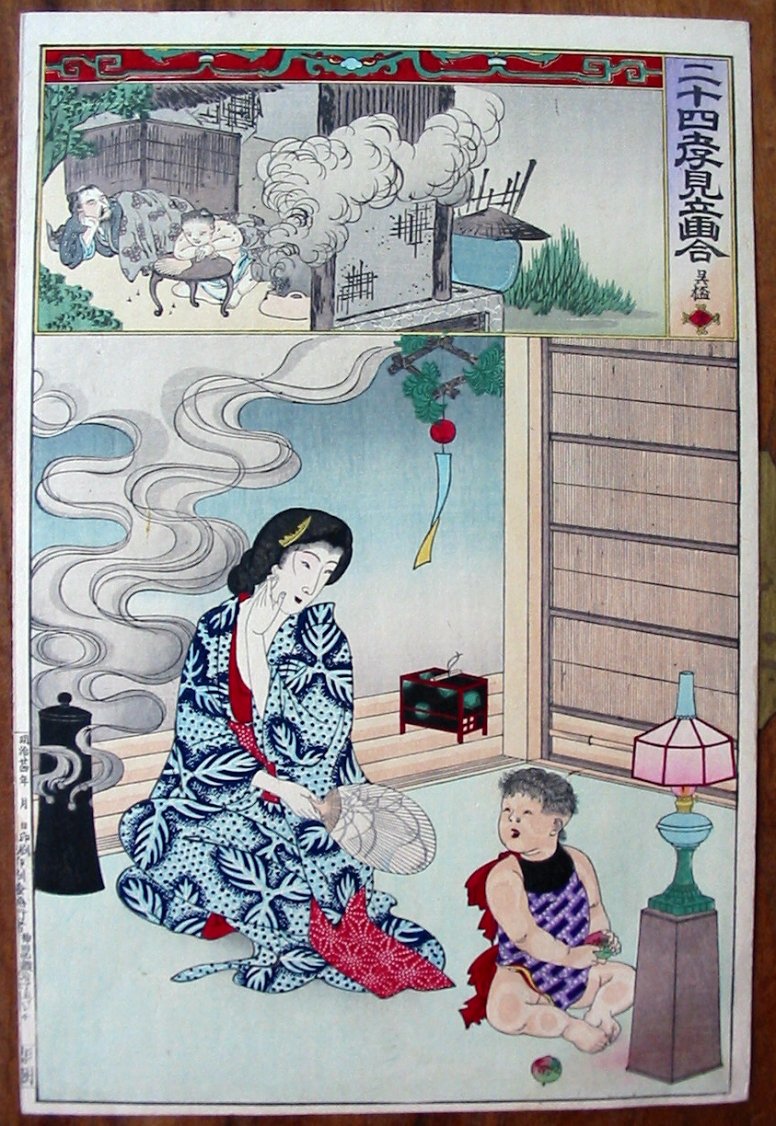 |
||
|
IT'S ALL IN THE FAMILY |
|
|
|
Chikanobu was a student of Kunichika who was a student of Kunisada who was a student of Toyokuni I. The image above is a detail from a print by Kuniyoshi who was also a student of Toyokuni I. So, I guess you could say that Kuniyoshi is artistically Chikanobu's great-uncle. It's all in the family!
The Kuniyoshi image of Gomō fanning his father to keep the mosquitoes at bay dates from 1848-51 or forty plus years before the print by Chikanobu. In the detail shown at the top of the print featured on this page the young boy has rested exhausted with the fan lying on the table in front of him. In the main body of the print the mother hold the fan as if merely to cool the air around her and her child. (See the details shown below) |
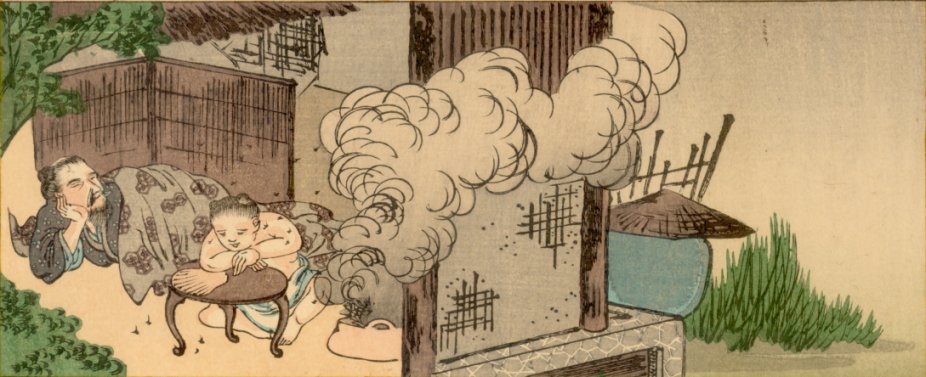 |
||
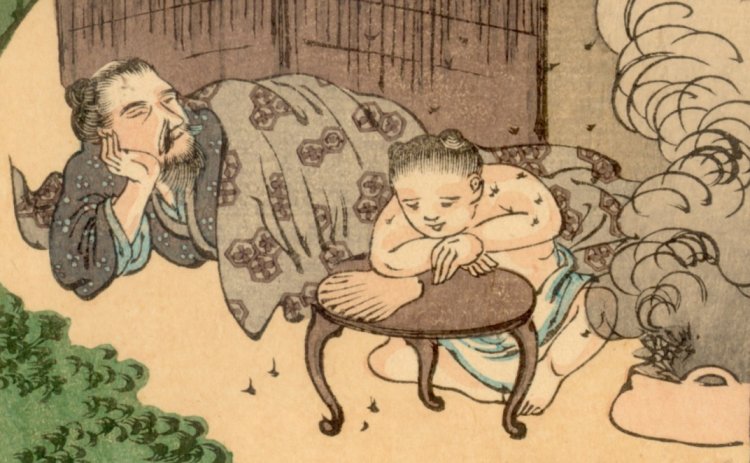 |
||
|
E-KYŌDAI 絵兄弟
This print is not only a mitate (見立), a comparison, a parody, as can be seen from the title, but also an e-kyōdai or 'sibling picture' in which the main image is a mimic of a smaller inset generally seen above. Notice the two little boys and the smoke intended to ward off mosquitoes prominent in both. Both images take place during the summer which is indicated by the clothing or lack thereof and the insects. However, while the boy at the top lives with his elderly father in poverty in a ramshackle hut the one at the bottom would seem to live in some comfort. Notice the lamp, the cricket cage, his elegant mother's comfortable attire.
See our entry on e-kyōdai on our De thru Forty-seven index/glossary page for more examples of this genre
The furin is a wind chime which is another visual give away that summer is the season being represented.
And then there is the insect cage or mushikago (虫籠 or むしかご).
|
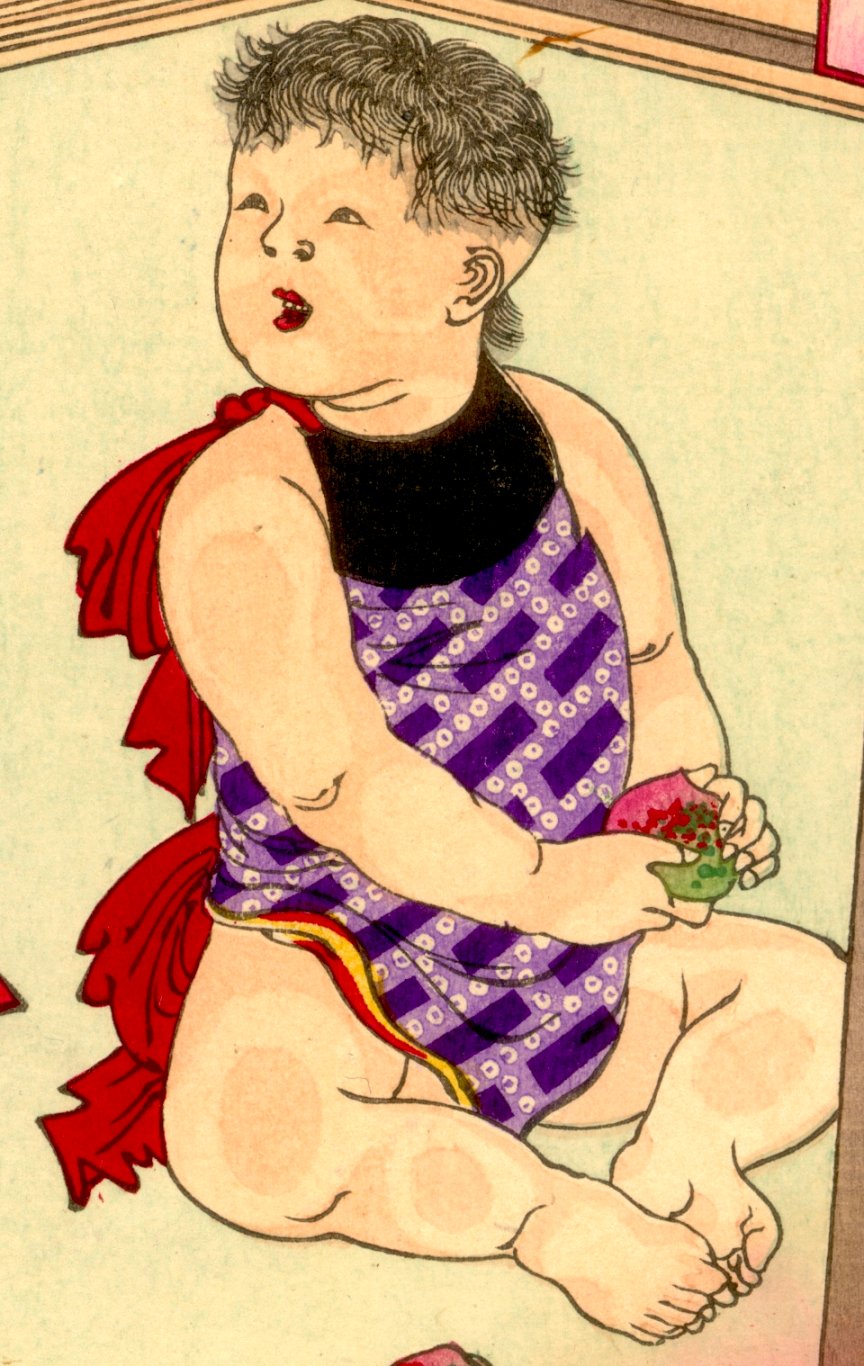 |
||
|
|
|
|
|
|
|
|
|
|
THE T'AO T'IEH 饕餮 TŌTETSU
The red and green banner seen at the top of this print plays several roles. It is both decorative and culturally and historically significant. What would appear to most people as simply a patterned design has a rich and wonderful history of somewhat mysterious origin and interpretation. The Chinese term t'ao t'ieh refers to the most prominent motif on Shang dynasty (商朝) bronzes (1766-1123 B.C.E.) It displays a creature which even enthralled Borges. He described it as having an enormous head attached to two bodies which trail off to its right and its left. It has legs, fangs, occasionally prominent ears, but no lower jaw. Some scholars believe it was meant to scare off evil spirits and others link it to the evolution of the dragon motif. A proto-dragon if you like.
It is also closely integrated to the concepts of greed, gluttony and covetousness. Often displayed on plates it was meant as a reminder to the consumer that moderation is a good thing.
The placement of this red and green strip on this print is not accidental or casual. It floats above the scene of the young boy Wu Meng who is letting the mosquitoes bite him so they won't attack his elderly father. He did this every night during the summer and this is regarded as one of the great acts of filial piety.
|
|
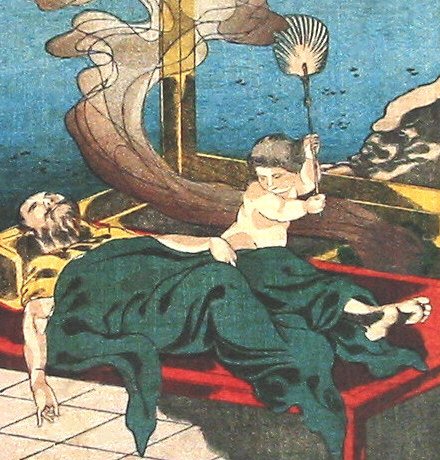
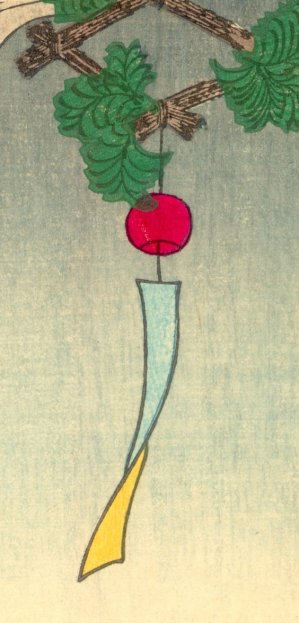
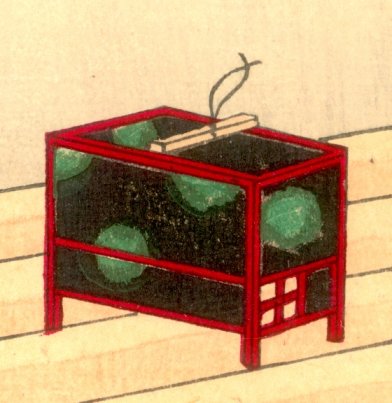

 HOME
HOME